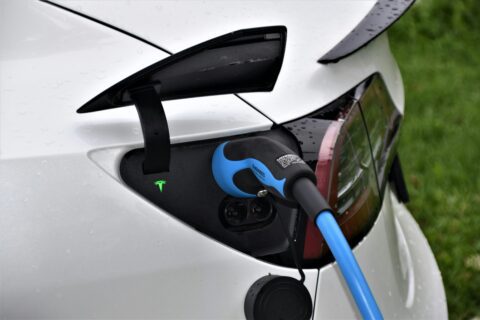Introduction to the impact of technology on transportation
Buckle up and get ready to explore how technology is reshaping the way we move from point A to point B. From electric cars zipping silently down the streets to autonomous vehicles navigating with precision, the transportation industry is undergoing a revolution like never before. Join us as we dive into the exciting world where innovation meets mobility!
Advancements in electric and autonomous vehicles
Electric and autonomous vehicles are at the forefront of revolutionizing transportation as we know it. The advancements in electric vehicle technology have brought about a shift towards sustainable and environmentally friendly modes of transport. With zero emissions, these vehicles are paving the way for a cleaner future.
On the other hand, autonomous vehicles are redefining the concept of driving itself. Imagine sitting back and letting your car navigate through traffic on its own – it’s no longer just a sci-fi dream but a reality being developed by leading automotive companies. The integration of artificial intelligence and sensors enables these vehicles to make split-second decisions for safe and efficient travel.
Together, electric and autonomous vehicles hold promise for transforming our roads into safer, greener spaces where convenience meets innovation. As we embrace these technological advancements, we’re stepping into a new era of transportation that is shaping how we move from point A to point B.
The rise of ride-sharing apps and their impact on traditional transportation methods
In recent years, the rise of ride-sharing apps has transformed how people move around cities. These platforms have made it easier than ever to hail a ride with just a few taps on a smartphone. Gone are the days of waiting for taxis or struggling to find parking.
Ride-sharing services like Uber and Lyft have not only provided convenience but also disrupted traditional transportation methods. They offer more flexibility in terms of routes, pricing, and vehicle options, catering to diverse needs and preferences.
With the increasing popularity of ride-sharing apps, public transportation systems are facing new challenges. Some argue that these services contribute to increased traffic congestion and competition with existing modes of transport. However, others see them as complementary solutions that fill gaps in underserved areas.
The impact of ride-sharing apps on traditional transportation methods is undeniable. As technology continues to evolve, it will be interesting to see how these services shape the future landscape of urban mobility.
Integrating technology into public transportation systems for efficiency and convenience
Public transportation systems are undergoing a significant transformation with the integration of technology. Commuters now have access to real-time updates on arrivals and departures, reducing wait times and increasing efficiency. By implementing smart ticketing systems, passengers can easily pay for their fares using mobile apps or contactless payment methods.
Navigation apps provide users with accurate route information and help them plan their journeys effectively. This not only saves time but also reduces congestion on roads and promotes sustainability. Additionally, sensors and cameras installed in buses and trains monitor passenger flow, allowing operators to optimize schedules based on demand.
The introduction of electric buses and trains is another leap towards creating eco-friendly transport options within cities. These vehicles produce fewer emissions, contributing to cleaner air quality in urban areas. Integrating technology into public transportation is paving the way for a more seamless and convenient commuting experience for all travelers.
The role of data analytics in improving transportation infrastructure
In today’s rapidly evolving transportation landscape, data analytics plays a crucial role in enhancing the efficiency and effectiveness of infrastructure. By harnessing vast amounts of data from various sources, transportation authorities can gain valuable insights into traffic patterns, commuter behaviors, and maintenance needs. This allows for better decision-making processes and resource allocation to optimize the overall system.
Data analytics enables real-time monitoring of vehicles and routes, leading to improved operational performance and enhanced safety measures. Predictive modeling helps anticipate potential issues before they escalate, ensuring smoother operations and reducing downtime. By analyzing historical data trends, planners can identify areas for improvement and implement targeted solutions to enhance the overall passenger experience.
Moreover, data-driven approaches facilitate dynamic pricing strategies that respond to demand fluctuations effectively. This not only benefits service providers but also enhances affordability and accessibility for commuters across different socioeconomic backgrounds. Embracing data analytics is pivotal in shaping a more sustainable, efficient, and user-centric transportation ecosystem for the future.
Future predictions and challenges for the industry
As we look towards the future of transportation, it’s clear that technology will continue to play a pivotal role in shaping how we move from place to place. With advancements in electric and autonomous vehicles on the rise, we can expect to see a significant shift towards more sustainable and efficient modes of transport.
Challenges such as infrastructure development, regulatory hurdles, and consumer acceptance will need to be addressed for these innovations to reach their full potential. However, with the rapid pace of technological advancement, there is great potential for overcoming these obstacles.
Data analytics will also be key in optimizing transportation systems, allowing for better traffic management and improved user experience. Integrating smart technologies into public transportation systems will further enhance efficiency and convenience for commuters.
While there are certainly challenges ahead, the future of transportation holds immense promise for creating safer, greener, and more seamless ways of getting around.
Conclusion: Embracing the potential of technology in shaping the future of transportation
The future of transportation is undoubtedly being shaped by the rapid advancements in technology. Electric and autonomous vehicles are becoming more prevalent, ride-sharing apps are changing how we get around, and public transportation systems are integrating tech for greater efficiency.
Data analytics plays a crucial role in improving infrastructure and making informed decisions. As we look ahead, challenges like regulatory hurdles and privacy concerns may arise, but the potential benefits far outweigh these obstacles.
Embracing the potential of technology is key to creating a sustainable, efficient, and convenient transportation system for all. By staying innovative and open-minded, we can drive change towards a brighter future where mobility is smarter and more accessible than ever before.







